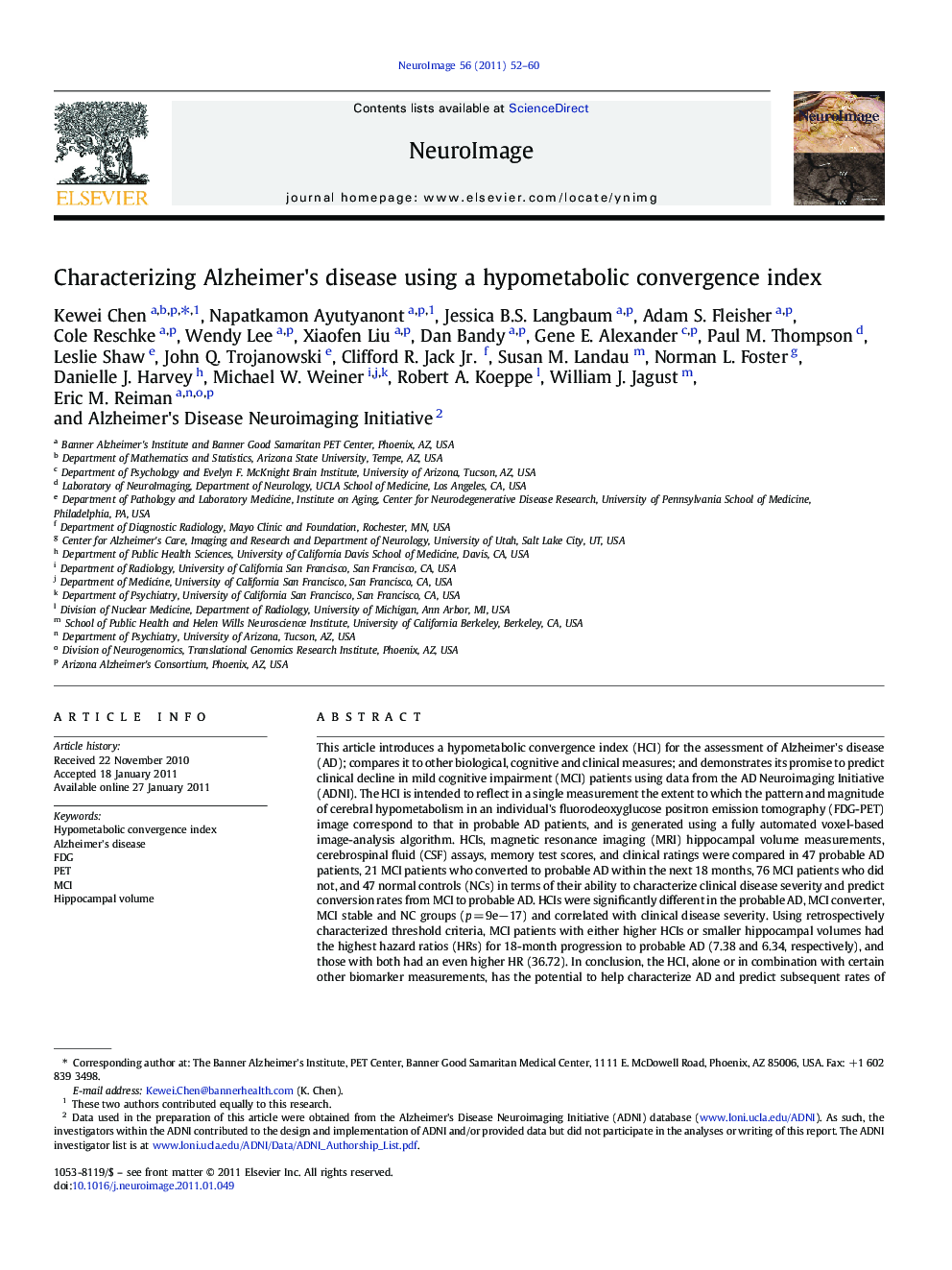| Article ID | Journal | Published Year | Pages | File Type |
|---|---|---|---|---|
| 3072093 | NeuroImage | 2011 | 9 Pages |
This article introduces a hypometabolic convergence index (HCI) for the assessment of Alzheimer's disease (AD); compares it to other biological, cognitive and clinical measures; and demonstrates its promise to predict clinical decline in mild cognitive impairment (MCI) patients using data from the AD Neuroimaging Initiative (ADNI). The HCI is intended to reflect in a single measurement the extent to which the pattern and magnitude of cerebral hypometabolism in an individual's fluorodeoxyglucose positron emission tomography (FDG-PET) image correspond to that in probable AD patients, and is generated using a fully automated voxel-based image-analysis algorithm. HCIs, magnetic resonance imaging (MRI) hippocampal volume measurements, cerebrospinal fluid (CSF) assays, memory test scores, and clinical ratings were compared in 47 probable AD patients, 21 MCI patients who converted to probable AD within the next 18 months, 76 MCI patients who did not, and 47 normal controls (NCs) in terms of their ability to characterize clinical disease severity and predict conversion rates from MCI to probable AD. HCIs were significantly different in the probable AD, MCI converter, MCI stable and NC groups (p = 9e−17) and correlated with clinical disease severity. Using retrospectively characterized threshold criteria, MCI patients with either higher HCIs or smaller hippocampal volumes had the highest hazard ratios (HRs) for 18-month progression to probable AD (7.38 and 6.34, respectively), and those with both had an even higher HR (36.72). In conclusion, the HCI, alone or in combination with certain other biomarker measurements, has the potential to help characterize AD and predict subsequent rates of clinical decline. More generally, our conversion index strategy could be applied to a range of imaging modalities and voxel-based image-analysis algorithms.
Research Highlights► Hypometabolic convergence index (HCI) is a FDG-PET based global single index. ► HCI reflects a person's cerebral hypometabolism pattern similarity to that of AD. ► HCI correlated with cognitive measures. ► HCI distinguished AD, MCI who converted to AD in 18 months, MCI who did not, and NC. ► MCIs with high HCI or small hippocampal volume had higher risk to convert to AD.
